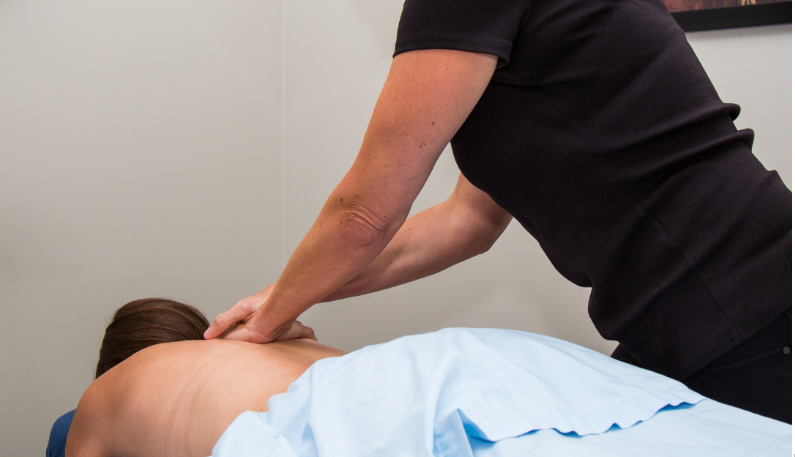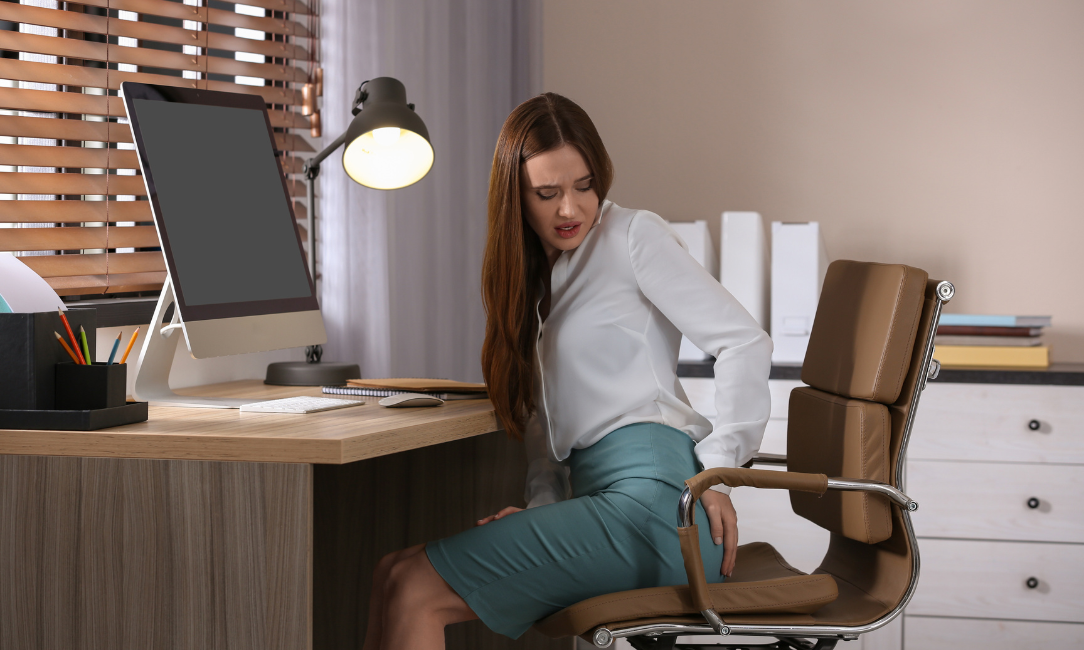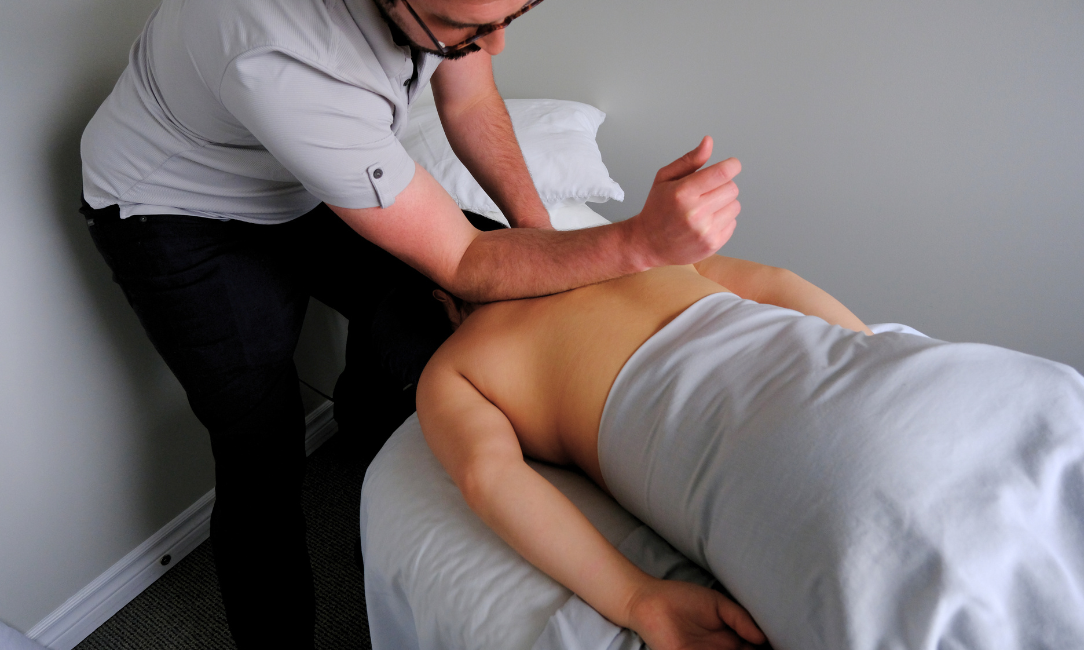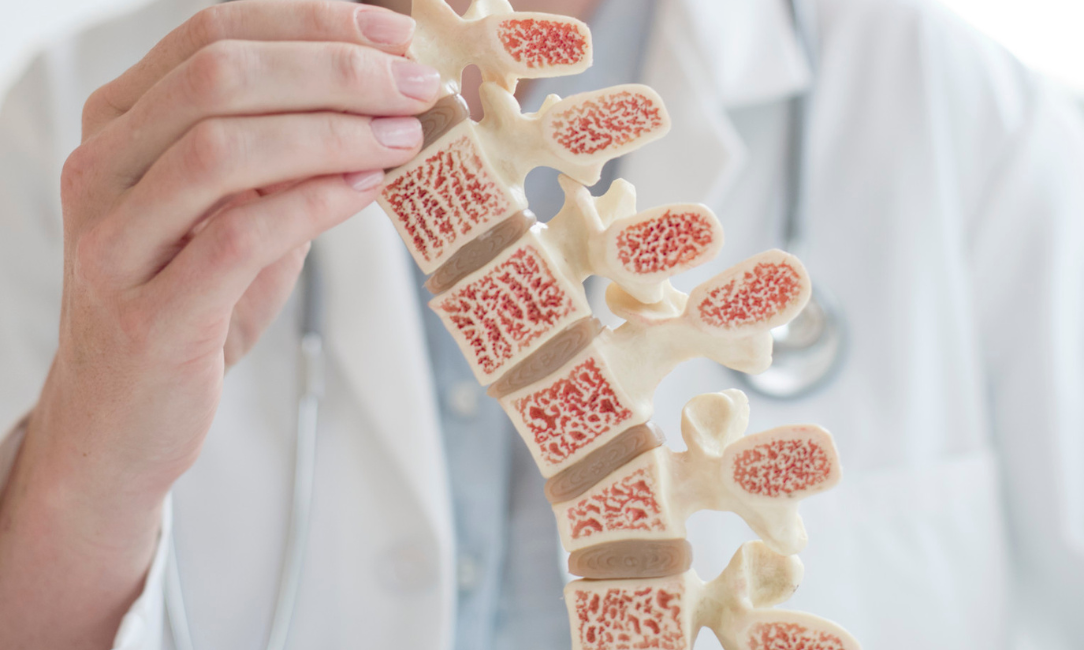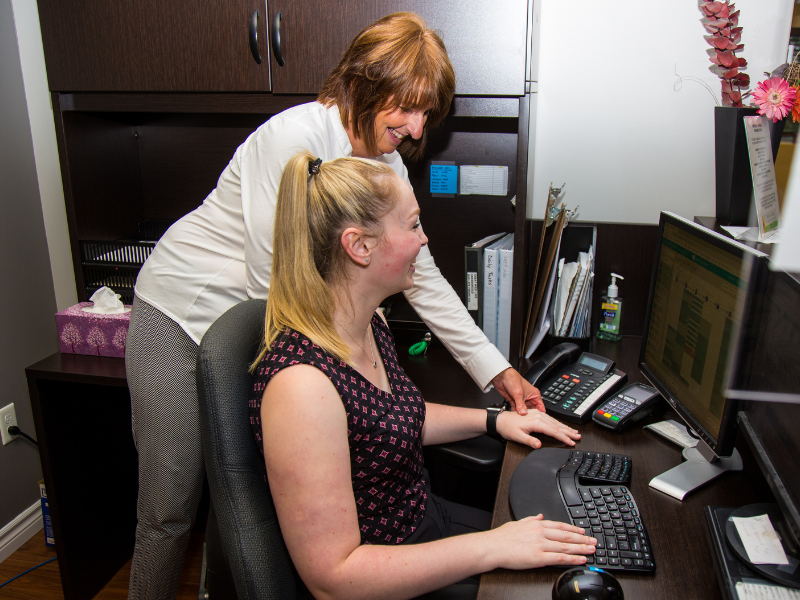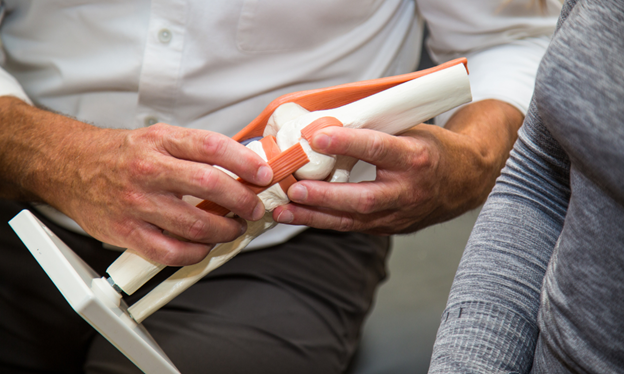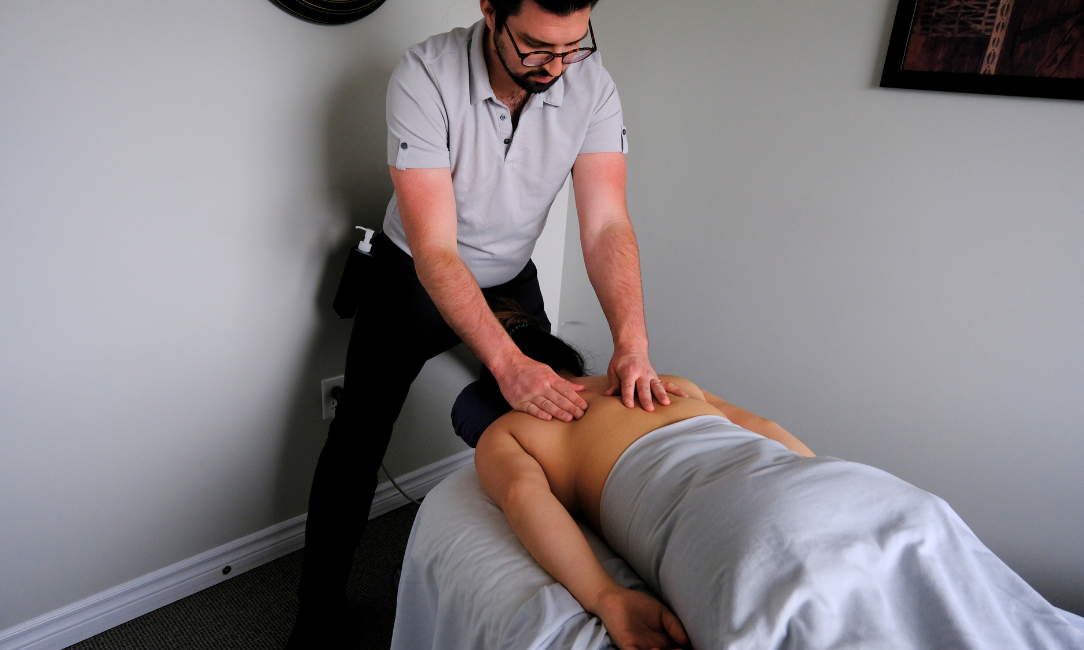The importance of a good posture
by Lorraine Breau-Thompson, PT
Although we don’t have to walk around with a book balanced on our head, our elders were right on the importance of a good posture. Ideally, in the standing position, we would like to see a line drawn straight down from our ear over the shoulder then the hip and ankle. A good way to see if your standing posture is close to this position is to check in a mirror or to ask someone to take your photo. An ideal posture keeps our muscles at an optimal length and reduces stress on our joints. This applies to our standing, sitting and lying postures.
Some ways to make it easier to keep our body in good alignment is to keep a good balance of muscle strength and flexibility. Changing positions frequently when doing a static task will help prevent the gradual give into gravity. When possible, try to avoid carrying heavy objects for prolonged periods without taking a break. Do your best to keep the object close to your center of gravity in order to avoid being bent too far forward. Choose a well-fitted backpack so that you don’t round your shoulders forward to keep the weight from pulling you back. When sitting, choose well-supported chairs that will keep the spine in good alignment. Soft padded sofas are usually more comfortable but are often not favorable for the spine.
There are many positive outcomes from having a good posture. This will help prevent injuries or pain syndromes by avoiding constant stress on the tissues. An erect posture helps with breathing as it allows the ribcage to expand fully. Falls could be prevented by keeping our center of gravity more centered. Although it is work to keep an erect posture, it helps keep our core muscles in check. It will also enhance sport performance as muscles will be in an ideal position to fire. Last but not least, a good posture will give you a healthy, confident appearance and will make you look taller!
To learn more, please feel free to contact Empower Physical Rehabilitation at 902-865-8100.
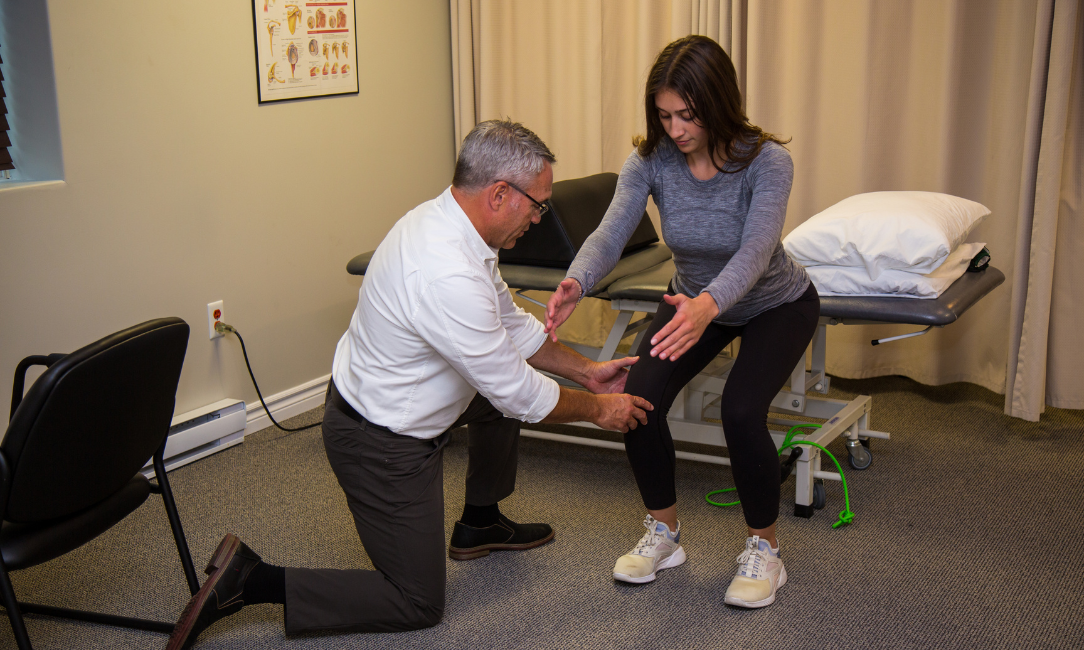

The Role of Physiotherapy, Massage Therapy, and Occupational Therapy After Joint Replacement Surgery
